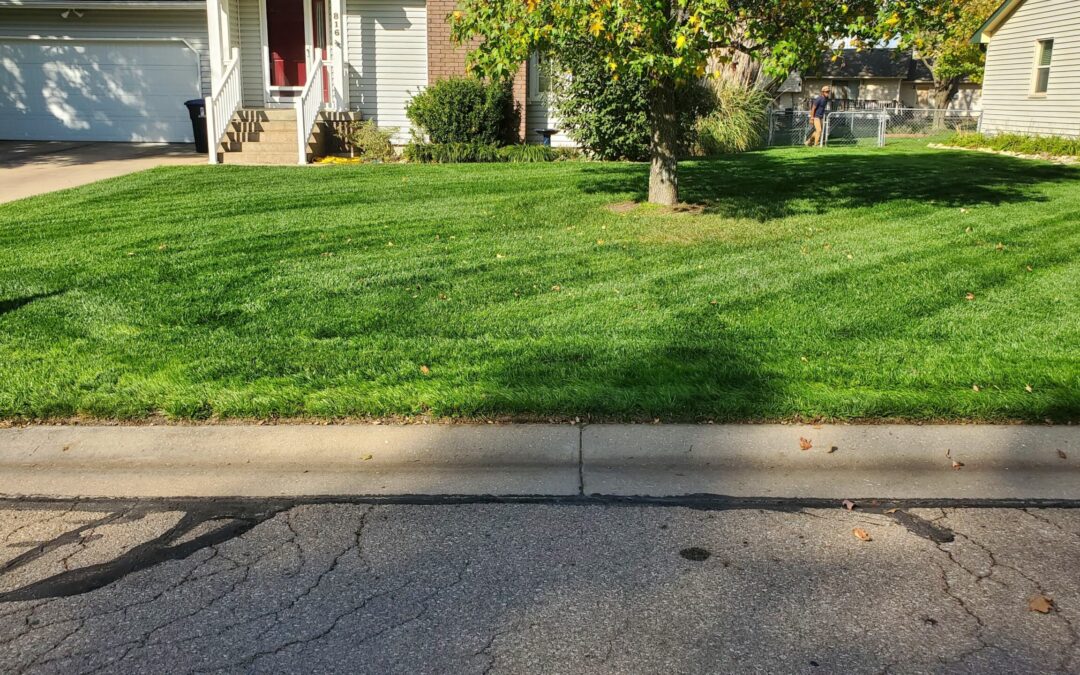Grass. Kansas. Grass. Kansas. Somehow, these go together like … grass in Kansas! How about that! Grasses are natural to prairies, and most Kansas is surrounded by prairie.
The question here is, what are the different types of grass in Kansas, and how well do they grow? Are there ornamental grasses that do well? Are there any grasses that can be planted for cool weather? Warm weather?
Types of grasses
Ornamental grasses – cool weather
- Feather reed grass
- Purple moor grass
- Blue Dune Lyme grass
Ornamental grasses – warm weather
- Maiden grass
- Switchgrass
- Fountain grass
- Japanese silver grass
Grass for lawns – warm weather
- Bermuda grass
- Buffalo grass
Grass for lawns – cool weather
- Kentucky bluegrass
- Perennial ryegrass
In addition, the Tall fescue grasses, ryegrass, or bluegrass stay green through winter and into spring. They also enjoy cooler climates and might stay green all year.
Care and feeding of grasses in Kansas
With the variety of plains grasses close to Kansas and the addition of ornamental grasses, the Kansas lawn can be green no matter the season.
However, some of the grasses listed are unusual in how they propagate.
Some reproduce by seeding, which is what is done on most lawns for the lovely emerald carpet of grass we all love. Not all of them do well in extreme heat, though, so your grass carpet might turn to gold during the hottest part of the Kansas summer.
Most of the ornamental grasses are rhizome propagators, which means that you have to dig it up, divide the roots, and replant it every once in a while. (Think aloe vera – If you’ve ever raised it, you know it likes to be crowding the pot before it is split at the roots and repotted.) You can watch for the best time to split the roots by watching the center of the bunch of grass fronds. It will turn brown earlier or show very little growth, a sign that it is time to split.
And some grasses can propagate either way – seeding or splitting. If you plan on splitting the ornamental grass clumps, spring is the best time. Splitting in the fall may not give the roots time to grow enough to survive the winter.
Should I Cut my Ornamental Grass?
The short answer to that question is “Yes.” And there is a “But.”
Ornamental grasses, in general, do not have to be dug up and stored for the winter, unlike some other rhizome plantings. The grass stems and the colorful fringe at the top will change color with the cold weather until it is brown or golden brown. However, please don’t cut it back yet!
The golden or brown grasses provide a nice contrast to the snow, and the roots continue to take hold. The roots continue to gather energy from the grasses until the stems and fronds are entirely brown. Once they have stored enough energy for the winter, they go into hibernation, like many other plants. Once the color change stops, the grasses closest to your home or other buildings should be moved, as the dried grasses are highly flammable.
Once things start thawing out, sometime in early March, the grasses can usually be cut down to about five or six inches from the ground. A recent article about ornamental grasses suggested that the stalks be tied together before cutting. It will make cutting more manageable and help when gathering the bundles of stalks for disposal.
Grasses for Lawns
One of the biggest problems in growing a beautiful lawn in Kansas is the wide diversity of seasonal temperature changes. With that in mind, many lawns are planted with various seeds.
Bermudagrass and zoysiagrass both do well in hot temperatures and are somewhat drought resistant. While bermudagrass will grow rapidly, zoysiagrass will grow more slowly before it becomes established. Both types of grass are also tolerant of some shade, and both will stand up to heavy foot traffic once they are established. Both also need to be cut relatively short when mowing. Zoysiagrass is popular for golf courses and athletic fields, as it provides a thick growth that can stand up to heavy foot traffic.
Tall fescue and bluegrass are popular for cool weather lawns. While the warm season grasses tend to brown when the cold weather hits, these grasses will stay green in colder temperatures. Therefore, it is often recommended for cold, northern climates. Tall fescue is very drought resistant and should be planted at least two months before the first expected frost, which will give it an excellent growing season before the cold weather comes, and will grow again in the spring as the snow melts. It will even stay green when the warm weather comes trotting along.
Aerating and dethatching are both beneficial for your lawns. They will improve the movement of air, seeds, nutrients, and water into the root zones of the grasses. Aerating is especially important when there is compaction of the soil.
Mulch Ado about Lawn Maintenance
There is that word again – mulch!
There are excellent reasons to mulch your plants and lawns when cold weather is approaching. In flower beds, it helps keep weeds away. It helps moderate the temperatures to keep your delicate plant roots hibernating while staying healthy during cold weather. It can prevent erosion as meltwater is moving along the ground. It can even help with “frost heaves” during frequent freezing and thawing, which often happens with mild winter weather.
A thick layer of mulch around trees will help protect the roots of trees and bushes and prevent damage to mowers and weed eaters while maintaining the grass.
All of these tasks, and more, are provided by your landscape partners at Divine Lawns, who are experts in the types and placement of green grasses for lawns and ornamental grasses that provide a nice pop of other colors while blooming.
 (316) 435-3509
(316) 435-3509 office@divine-lawns.com
office@divine-lawns.com
